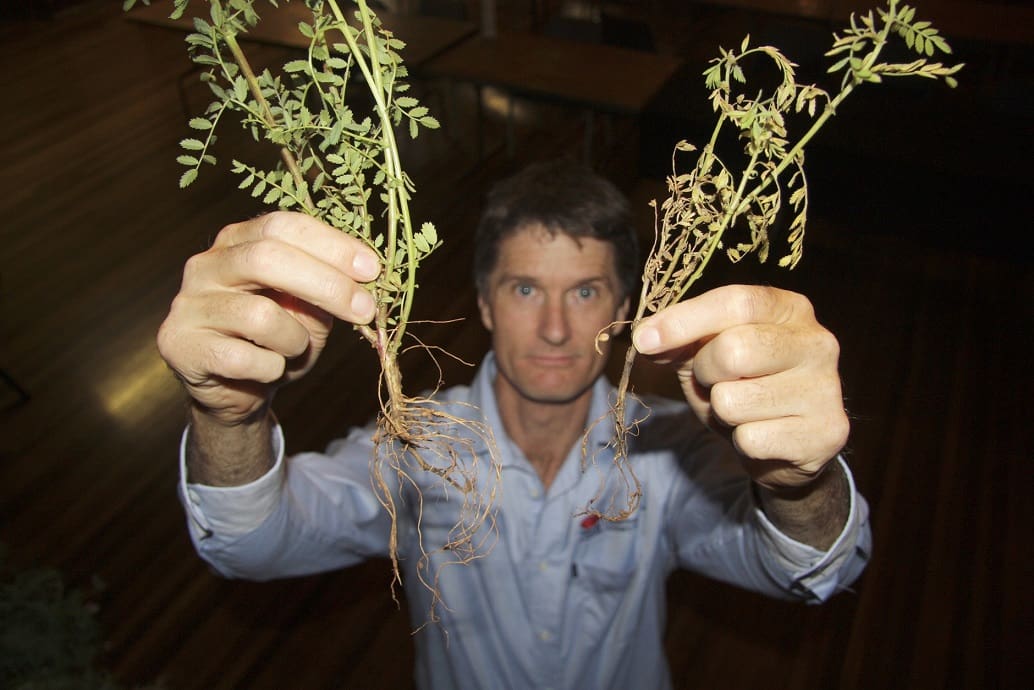
NSW Department of Primary Industries plant pathologist Sean Bithell shows a healthy chickpea plant (left) compared with a plant affected by phytophthora.
RESEARCHERS are asking grain growers and advisers for plant root samples, as they delve into the state’s soils to learn more about root diseases in pulse and oilseed crops.
The samples will contribute to a national Grains Research and Development Corporation (GRDC) investment, through which the frequency and distribution of potential soil-borne disease-causing pathogens in pulse and oilseed cropping areas is being investigated.
Until recently, little has been known about the status of soil-borne pathogens in regions where pulses and oilseeds are grown.
However, a national survey is continuing in 2020 across the southern, western and northern growing regions, to build on information generated out of a similar national survey in 2019.
South Australian Research and Development Institute (SARDI) research scientist, Blake Gontar, is leading the project.
Mr Gontar said unlike foliar diseases in pulse and oilseed crops, knowledge around root diseases was limited.
“The reason we are undertaking this survey work is that we don’t have a good handle on which pathogens exist in areas where pulse and oilseed crops are grown, as well as their frequency and distribution,” he said.
Samples for testing
Researchers are keen to receive root samples representative of all pulse and oilseed growing regions, as well as seeking observations and reports from growers and advisers.
Mr Gontar and the SARDI research team are collaborating with pathologists from Agriculture Victoria, the Department of Primary Industries and Regional Development in Western Australia, New South Wales Department of Primary Industries, and the University of Southern Queensland in undertaking the survey.
Pathologists in each state are responsible for disseminating the sampling kits to agronomists and growers and collating and scoring samples from their respective regions.
All samples will be sent to SARDI for testing. Specific DNA tests (including those drawn from the existing suite of PREDICTA®B tests) enable testing for around 24 specific pathogens. Next generation sequencing (NGS), a different molecular technique, is also being used to screen for possible new pathogens for which PREDICTA®B tests have not been developed.
The PREDICTA®B service is delivered through SARDI’s Molecular Diagnostic Centre, a state-of-the-art facility capable of delivering high-throughput diagnostic testing to industry. Investment in the Molecular Diagnostic Centre and the continued development of PREDICTA®B are components of the GRDC-SARDI strategic research partnership.
International experience, particularly in North America and France where pulse root disease research is relatively advanced, is guiding the Australian research.
Agronomists and growers can contribute samples to the survey by contacting:
- Queensland – Kirsty Owen, [email protected]
- Northern NSW – Sean Bithell, [email protected]
- Southern NSW – Kurt Lindbeck, [email protected]
- Victoria – Joshua Fanning, [email protected]
- South Australia – Blake Gontar, [email protected]
- Western Australia – Carla Wilkinson, [email protected]
Source: GRDC

HAVE YOUR SAY